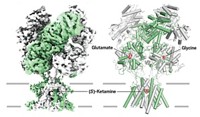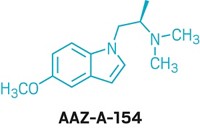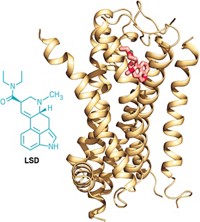Advertisement
Grab your lab coat. Let's get started
Welcome!
Welcome!
Create an account below to get 6 C&EN articles per month, receive newsletters and more - all free.
It seems this is your first time logging in online. Please enter the following information to continue.
As an ACS member you automatically get access to this site. All we need is few more details to create your reading experience.
Not you? Sign in with a different account.
Not you? Sign in with a different account.
ERROR 1
ERROR 1
ERROR 2
ERROR 2
ERROR 2
ERROR 2
ERROR 2
Password and Confirm password must match.
If you have an ACS member number, please enter it here so we can link this account to your membership. (optional)
ERROR 2
ACS values your privacy. By submitting your information, you are gaining access to C&EN and subscribing to our weekly newsletter. We use the information you provide to make your reading experience better, and we will never sell your data to third party members.
Neuroscience
Response to psychedelic drugs may depend on small genetic differences
In vitro study reports that natural mutations that change a serotonin receptor’s structure may impact drugs’ potency
by Attabey Rodríguez Benítez, special to C&EN
August 19, 2022
Psychiatrists are interested in using psychedelic compounds as an alternative therapy for mental disorders like depression and post-traumatic stress disorder. In clinical trials, some participants report mental health improvements after treatment with psychedelic substances, yet others report no significant effect. A team at the University of North Carolina at Chapel Hill has now reported that natural variations in a serotonin receptor could affect how some psychedelic compounds interact with people’s cells, which could be related to whether patients respond to treatments (ACS Chem. Neurosci. 2022, DOI: 10.1021/acschemneuro.1c00815).

The team synthesized seven naturally occurring human variants of the 5-HT2A serotonin receptor, a protein made in neurons that binds to a precursor of serotonin called 5-hydroxytryptamine. Upon binding, the receptor becomes activated, triggering changes in emotion and cognition. However, other molecules, including psychedelic drugs, can activate this receptor too.
To observe drug responses, the researchers gauged the potency of psychedelic compounds including psilocin, LSD, mescaline, and 5-methoxy-N,N-dimethyltryptamine (5-MeO-DMT) in vitro by measuring the concentration needed to bind the compounds to 50% of each of the receptor variants, also known as EC50. They observed that psilocin bound to the non-mutated form of the receptor with a potency seven times as high as it bound to some of the variants. On the flip side, when binding to mescaline, some receptor variants showed a potency nine times as high as the non-mutated variant.
“It may not seem like a huge shift in potency in a field where things can be many orders of magnitude different,” says Sam Slocum, one of the authors of the study. “But in these kinds of treatments, every detail matters when determining what level of brain exposure you need.”
Because these genetic variations impact how the receptor interacts with various psychedelics, sequencing trial participants’ DNA might be helpful when evaluating their treatment response, Slocum says.





Join the conversation
Contact the reporter
Submit a Letter to the Editor for publication
Engage with us on Twitter